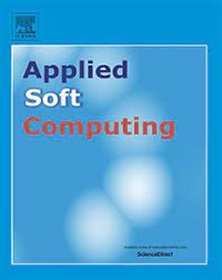Short-term forecasting of electricity price using ensemble deep kernel based random vector functional link network
IF 7.2
1区 计算机科学
Q1 COMPUTER SCIENCE, ARTIFICIAL INTELLIGENCE
引用次数: 0
Abstract
Accurate short-term electricity price forecasting in a deregulated electrical market is a difficult task as the electricity price exhibits high nonlinearity, sharp price spikes, and seasonality in different frequencies, etc. Thus, this study presents a new approach using an Ensemble Deep Kernel Random Vector Functional Link Network (EDKRVFLN) model hybridized with a Chaotic Sine Cosine Improved Firefly Algorithm (CSCIFA) for short-term electricity price forecasting with better generalization capacity, simple structure, and significant accuracy. Unlike the Ensemble Deep Random Vector Functional Link Network (EDRVFLN) where each stacked layer requires proper choice of the number of hidden nodes and manual tuning of random weights and biases along with the pseudoinverse solution of the output weights in each layer leading to suboptimal model generalization. However, the choice of random weights and biases along with the number of hidden neurons in the proposed EDKRVFLN model can be dispensed by using kernel-based transformation and representation learning. Further each stacked layer of the proposed model utilizes kernel based linear features from the direct links and nonlinearly transformed features from the enhancement nodes from the preceding layers of the prediction model. Also, each layer produces an output by simple invertible kernel matrix inversion based on generalized least squares, and the final output is the ensemble of the outputs from each layer, thus simultaneously producing an ensemble and deep learning framework. Seven electricity price datasets are examined to confirm the supremacy of the proposed model in comparison to several benchmark models.
求助全文
约1分钟内获得全文
求助全文
来源期刊

Applied Soft Computing
工程技术-计算机:跨学科应用
CiteScore
15.80
自引率
6.90%
发文量
874
审稿时长
10.9 months
期刊介绍:
Applied Soft Computing is an international journal promoting an integrated view of soft computing to solve real life problems.The focus is to publish the highest quality research in application and convergence of the areas of Fuzzy Logic, Neural Networks, Evolutionary Computing, Rough Sets and other similar techniques to address real world complexities.
Applied Soft Computing is a rolling publication: articles are published as soon as the editor-in-chief has accepted them. Therefore, the web site will continuously be updated with new articles and the publication time will be short.
 求助内容:
求助内容: 应助结果提醒方式:
应助结果提醒方式:


